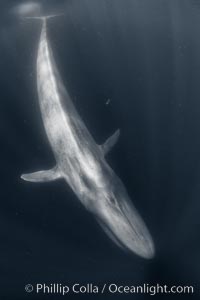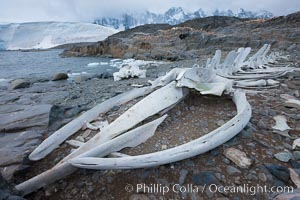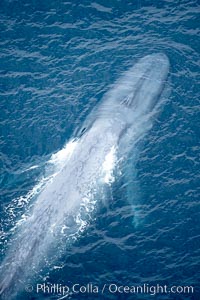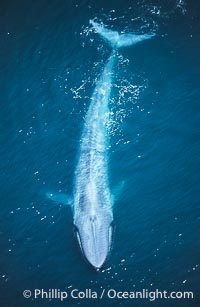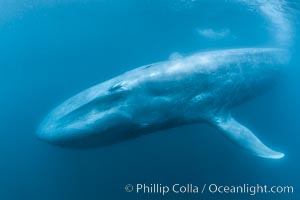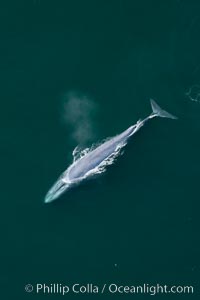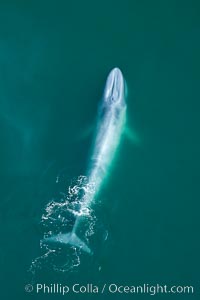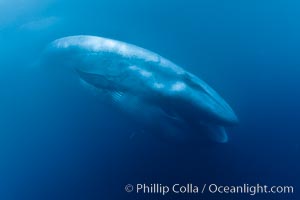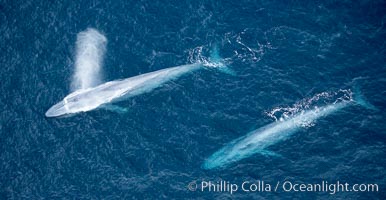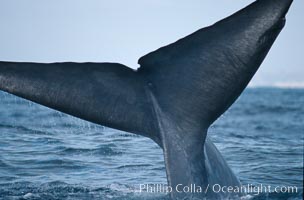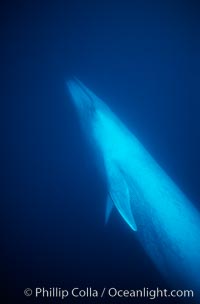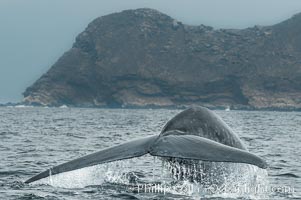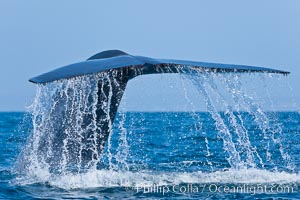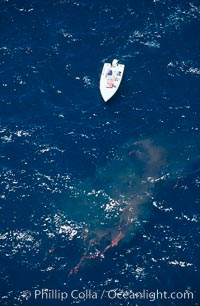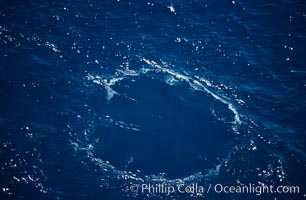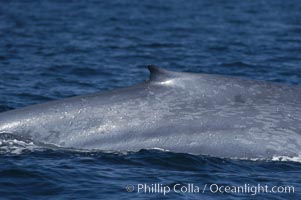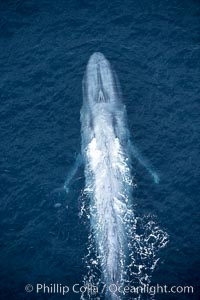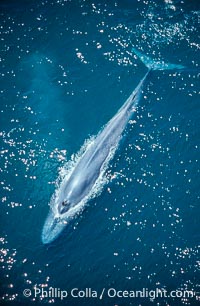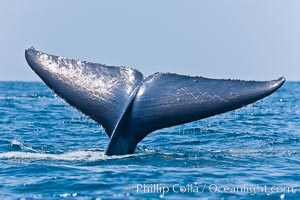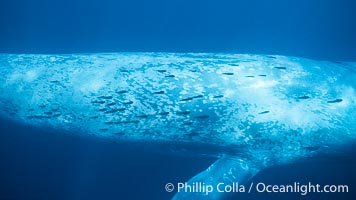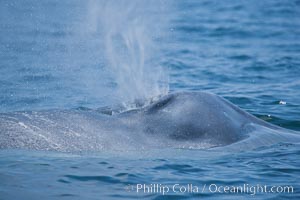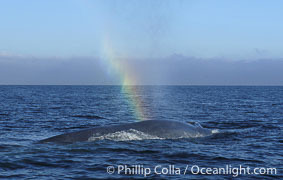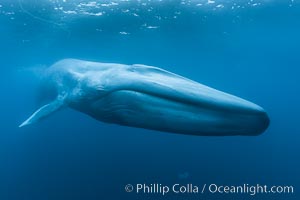
Blue whale close-up underwater portrait, taken breath-hold diving just a few feet away from the enormous blue whale with a fisheye lens.
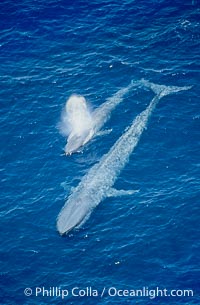
Blue Whale Aerial Photo. Two blue whales, a mother and her calf, swim through the open ocean in this aerial photograph. The calf is blowing (spouting, exhaling) with a powerful column of spray. Balaenoptera musculus.
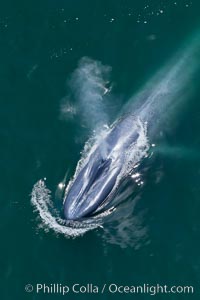
Aerial photo of a blue whale. Blue whale, exhaling as it surfaces from a dive, aerial photo taken off the coast of California.
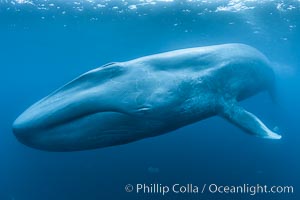
Portrait of a huge adult blue whale in the open ocean, head to tail (rostrum to fluke), only a few feet away, showing detail in its eye, lips and throat pleats and skin pattern.
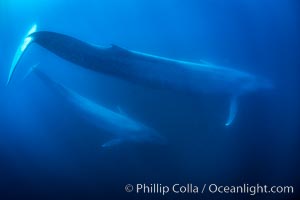
Blue whales, adult and juvenile (likely mother and calf), swimming together side by side underwater in the open ocean.
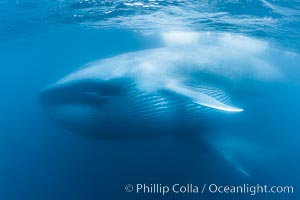
Blue whales (mother and calf) underwater feeding, the adult blue whale's throat is inflated after engulfing a huge mouthful of krill.
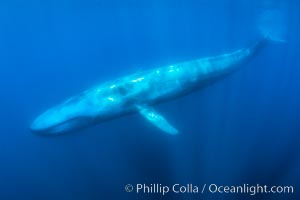
A huge blue whale swims through the open ocean in this underwater photograph. The blue whale is the largest animal ever to live on Earth.
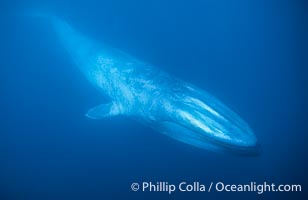
Blue whale underwater photo. A huge blue whale swims through the open ocean in this underwater photograph, Balaenoptera musculus, Mexico.
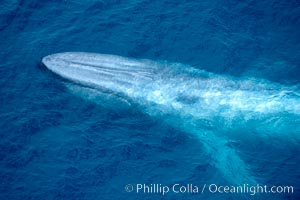
Blue whale (Balaenoptera musculus) surfacing with blowhole closed tight. The upper jawbone of the blue whale, which is the largest bone in the animal kingdom, forms the leading edge shape of the whale. Balaenoptera musculus,
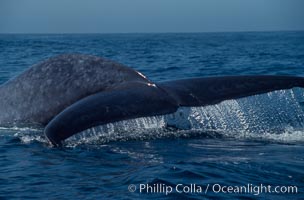
Blue whale fluking up (raising its tail) before a dive to forage for krill, Baja California (Mexico). Balaenoptera musculus.
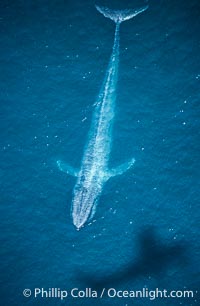
Blue whale aerial photo, with the shadow of the survey plane providing scale as to how huge the whale really is. Balaenoptera musculus.
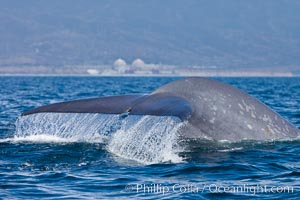
A blue whale flukes up (raises its tail) as it prepares to dive underwater, with the San Onofre nuclear power plant in the background.
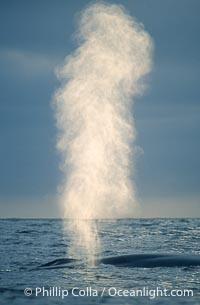
Blue whale blows, emitted from a blue whale's twin blowholes as it breathes at the ocean's surface, can reach 30' into the air and can be seen and heard for miles.
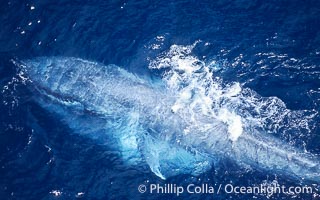
Blue whale eating krill, aerial photo, the mouth and throat pleats are engorged with water and krill. Aerial photo, Baja California.
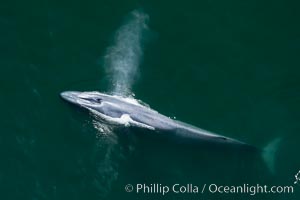
Blue whale, exhaling as it surfaces from a dive, aerial photo, off the coast of California not far from Los Angeles.
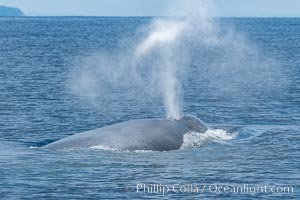
Blue whale, exhaling in a huge blow as it swims at the surface between deep dives. The blue whale's blow is a combination of water spray from around its blowhole and condensation from its warm breath.
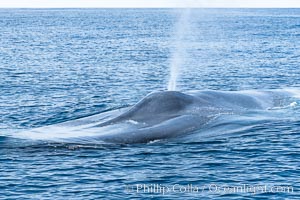
Blue whale, exhaling in a huge blow as it swims at the surface between deep dives. The blue whale's blow is a combination of water spray from around its blowhole and condensation from its warm breath.
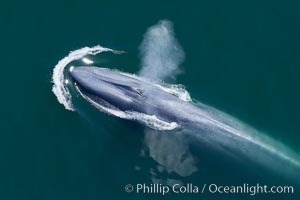
Blue whale, exhaling as it surfaces from a dive, aerial photo. Redondo Beach, California. Balaenoptera musculus.
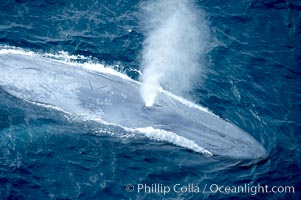
Blue whale, exhaling in a huge blow as it swims at the surface between deep dives. The blue whale's blow is a combination of water spray from around its blowhole and condensation from its warm breath.
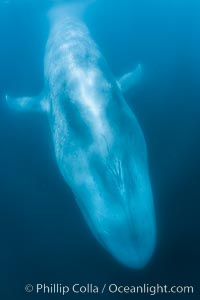
A blue whale's rostrum, hydrodynamic and efficient, it leads the way as the world's largest animal swims gracefully through the open ocean.
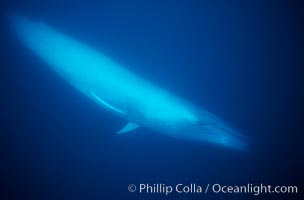
Blue whale, the largest animal ever to live on earth, underwater view in the open ocean. Balaenoptera musculus.
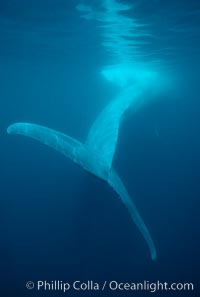
Underwater photo of a blue whale fluke, the powerful tail that propels the huge whale through the open ocean. The caudal muscles that power the fluke up and down are the most powerful muscles in the animal kingdom. Balaenoptera musculus.
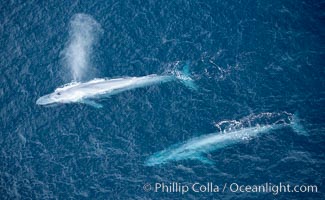
Two blue whales swimming at the surface, one is blowing a spout (combination of water and condensation), aerial view in the Pacific Ocean near San Diego.
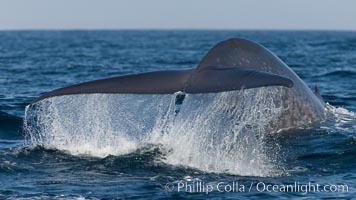
Sea water falls from the raised fluke (tail) of an enormous blue whale as it dives below the sea to forage for food.
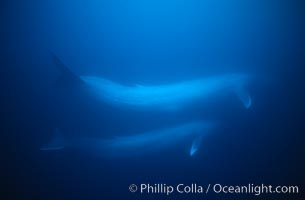
An underwater photo of two blue whales, likely a mother with calf or subadult. Blue whale calves will accompany their mothers for approximately a year before being weaned. Female blue whales are larger than males, an adaptation enabling a mother to cope with the physical demands of calving and nursing.
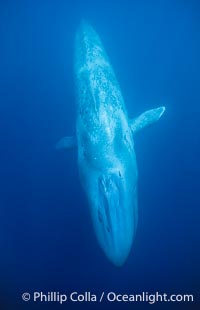
Underwater photo of a blue whale, Balaenoptera musculus, the largest animal ever to inhabit earth, swims through the open ocean, in this underwater photograph.
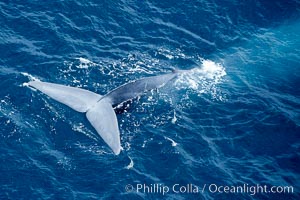
Blue whale fluking. An enormous blue whale raises its powerful fluke (tail) high out of the water as it makes a steep dive into the open ocean.
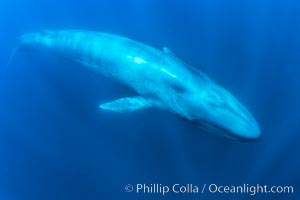
A huge blue whale swims through the open ocean in this underwater photograph. The blue whale is the largest animal ever to live on Earth.
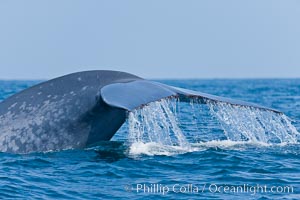
Blue whale, raising fluke prior to diving for food, fluking up, lifting tail as it swims in the open ocean foraging.
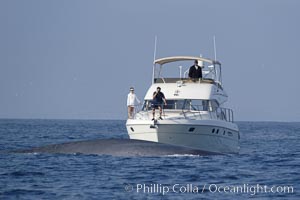
An enormous blue whale swims in front of whale watchers on a private yacht. Only a small portion of the whale, which dwarfs the boat and may be 70 feet or more in length, can be seen. Open ocean offshore of San Diego.
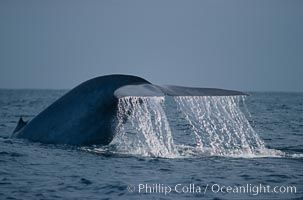
Blue whale, the largest animal ever to inhabit earth, swims through the open ocean, raising fluke (tail) before making a deep dive.
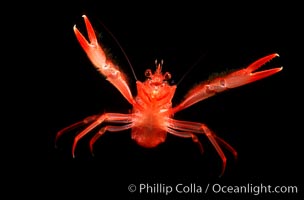
What does a huge blue whale eat? Some years, they feed on aggregations of pelagic red crabs, Pleuroncodes planipes.
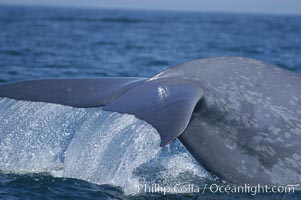
An enormous blue whale raises its fluke (tail) high out of the water before diving. Open ocean offshore of San Diego.
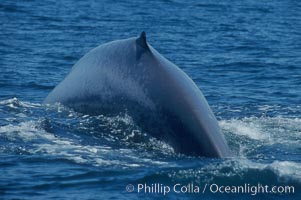
Blue whale rounding out before diving, showing dorsal ridge, distinctive mottled skin pattern and small, falcate dorsal fin. Open ocean offshore of San Diego. Balaenoptera musculus.
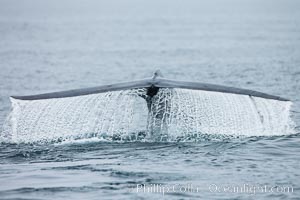
Blue whale (Balaenoptera musculus) raising its fluke to dive, Channel Islands, Santa Barbara, California.
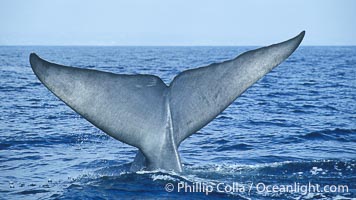
An enormous blue whale raises its fluke (tail) high out of the water before diving. Open ocean offshore of San Diego.
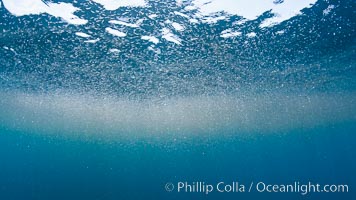
A cloud of tiny pink krill gathers at the ocean surface, where it is likely to be preyed upon by sharks, fish, birds and whales. Likely Euphausia pacifica.
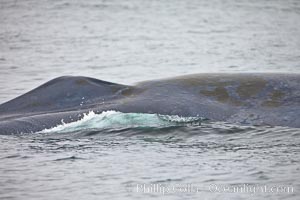
Diatoms (Coccineis ceticola) grow in a thin brown film on the skin of a blue whale (Balaenoptera musculus).
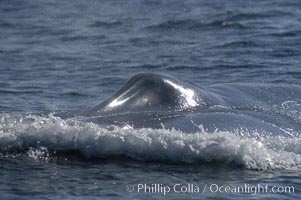
The splashguard of this approaching blue whale (Balaenoptera musculus) pushes water aside so that it can open its blowholes (which are just behind the splashguard) to breathe.
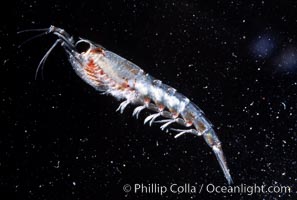
Blue whales residing off California eat tons (literally) of tiny euphasiid krill, such as Thysanoessa spinifera.
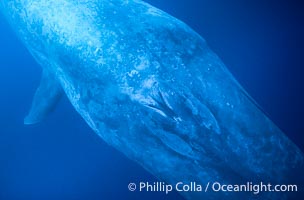
Blue whale, very close underwater view of the blowhole of an inquisitive adult. Balaenoptera musculus.
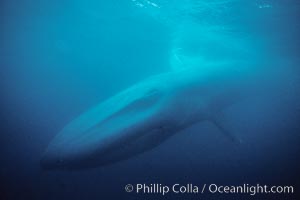
Blue whale underwater photo. This was a wild pass, very close. Too bad it was shot so long ago I was using Kodachrome which did not deal with the hazy water well. What a great memory...
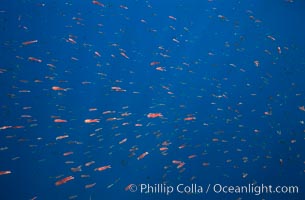
Pelagic red tuna crabs, Pleuroncodes planipes, swimming en masse near the Coronado Islands, Mexico. These red crabs are a food source for blue whales.
